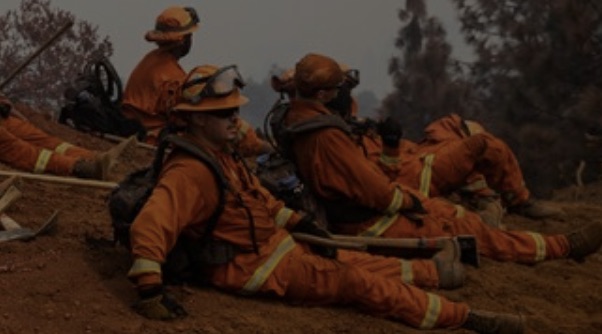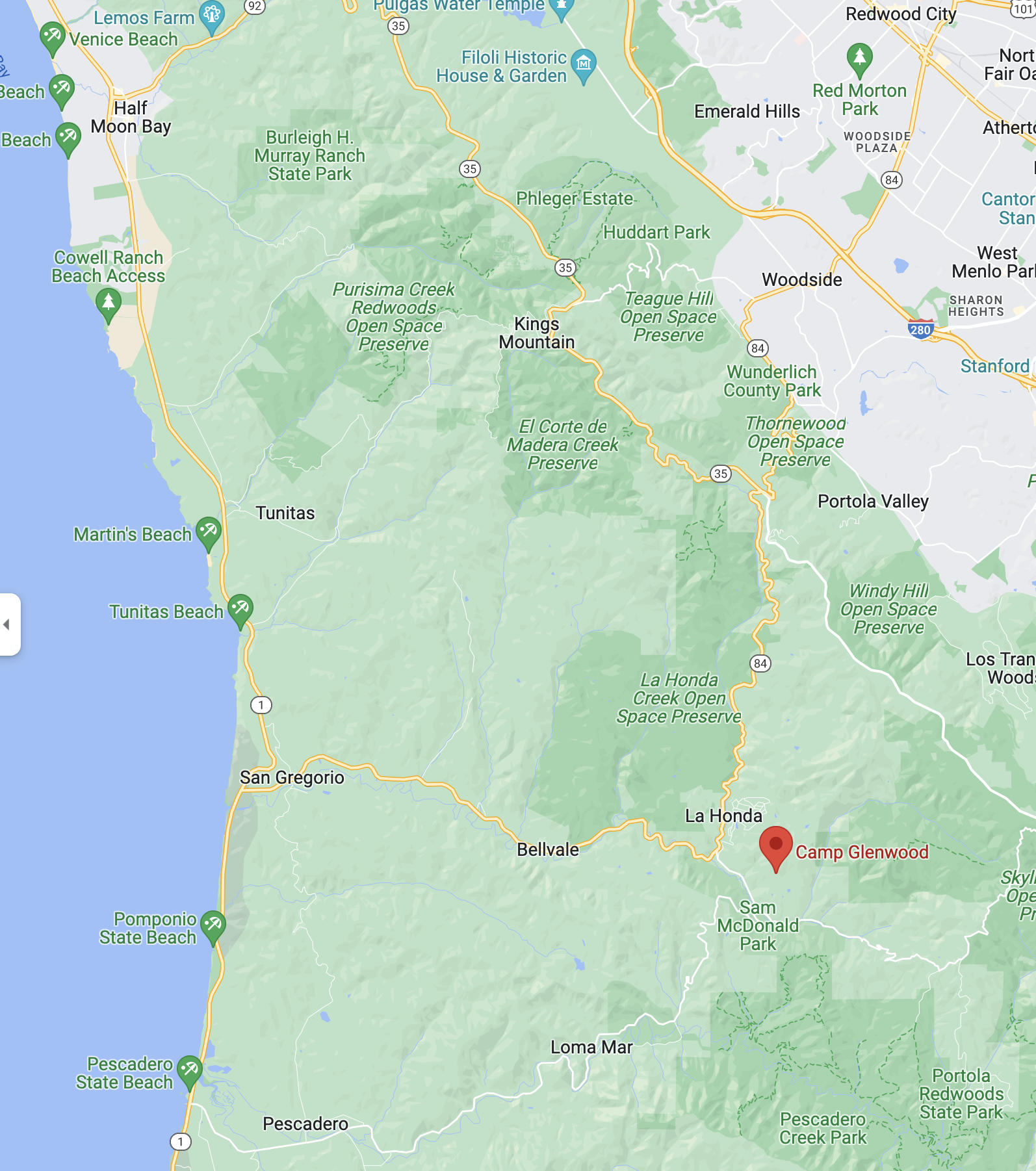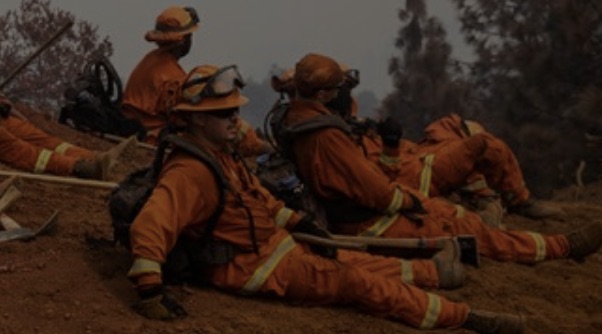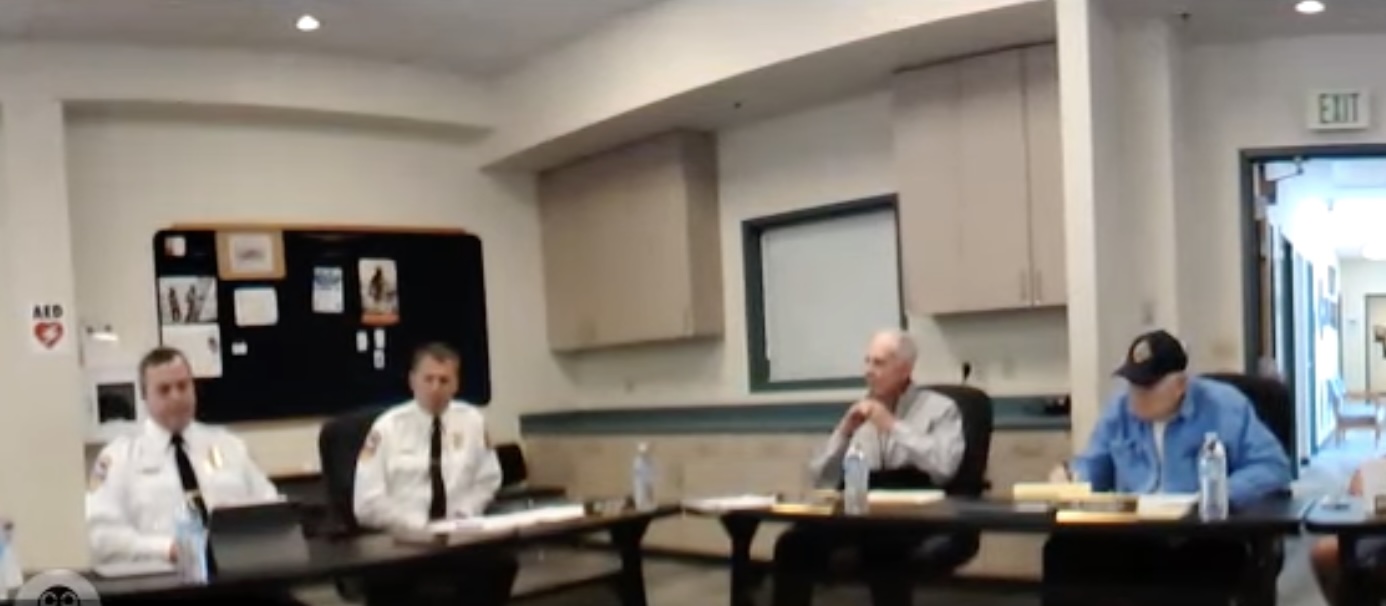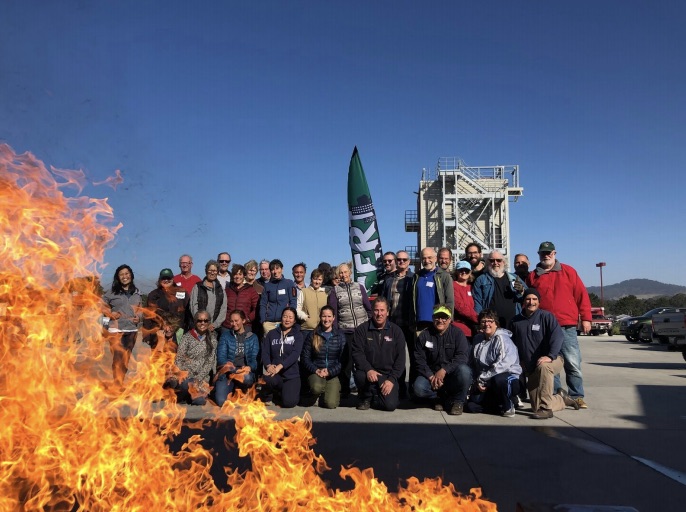|
Getting your Trinity Audio player ready...
|
VIDEO. From the Coastside Fire Protection District (CFPD) Director’s meeting on Wednesday, July 27th, 2022 at 4:00pm (NEW TIME from 6:00pm).
Fire Chief, Nate Armstrong, reports.
The California State budget is funding 1,500 positions which is a 15% increase in CalFire staff.
Updated: 11:31 AM PDT Aug 21, 2022
SACRAMENTO, Calif. —
As wildfires rage across California each year, exhausted firefighters call for reinforcements from wherever they can get them — even as far as Australia.
Yet one homegrown resource is rarely used: thousands of experienced firefighters who earned their chops in prison. Two state programs designed to get more former inmate firefighters hired professionally have barely made a dent, according to an Associated Press review, with one $30 million effort netting jobs for just over 100 firefighters, little more than one-third of the inmates enrolled.
Clad in distinctive orange uniforms, inmate crews protect multimillion-dollar homes for a few dollars a day by cutting brush and trees with chainsaws and scraping the earth to create barriers they hope will stop flames.
Once freed from prison, however, the former inmates have trouble getting hired professionally because of their criminal records, despite a first-in-the-nation, 18-month-old law designed to ease their way and a 4-year-old training program that cost taxpayers at least $180,000 per graduate.
“It’s absolutely an untapped pool of talent,” said Genevieve Rimer, who works with former inmates trying to clear their records. “Thousands of people are coming back from California’s fire camps annually. They have already been trained. They have a desire to go and put their lives on the line in order to ensure public safety.”
California is hardly alone in needing seasoned smoke eaters, but the nation’s most populous state faces different challenges than other more sparsely settled Western regions. A wildfire that nearly leveled the Sierra Nevada foothills town of Paradise nearly four years ago, for instance, was the nation’s deadliest wildfire in nearly a century, killing 85 people.
The U.S. Forest Service is short about 1,200 firefighters, 500 of them in California, and the Interior Department is down about 450 firefighters, 150 of them in California, said two of the state’s top elected officials, U.S. Sens. Dianne Feinstein and Alex Padilla, in a recent letter to Biden administration officials.
Other Western states are grappling with the issue. Nevada is considering a program like Arizona’s “Phoenix Crew,” which started in 2017 and provides mostly former inmate firefighters a pipeline to firefighting jobs.
Gov. Gavin Newsom signed the California legislation in 2020, allowing former inmates to seek to withdraw guilty pleas or overturn convictions. A judge can then dismiss the charges. Former inmates convicted of murder, kidnapping, arson, escape and sex offenses are excluded.
Since the law took effect, the nonprofit Forestry & Fire Recruitment Program, started by two former inmate firefighters, has worked with the Legal Aid Foundation of Los Angeles to help former inmates clear their records and get hired.
Yet they have only been able to file 34 petitions, and just 12 had records expunged during what the program warns “can be a long and drawn out process.”
Ashleigh Dennis is one of at least three attorneys filing expungement petitions through the Oakland-based advocacy group Root & Rebound. She has similarly been able to file just 23 requests, with 14 granted.
Among other hurdles, applicants must show a judge evidence they have been rehabilitated, and the expungement only applies to crimes they were incarcerated for while working in firefighting crews. Many people have unrelated convictions that must be separately expunged.
It’s been a learning curve to educate judges about the law and get the corrections department to speed up certifying to the court that inmates have served as firefighters, said Dennis and one of her clients, Phi Le. He petitioned the court in October and his record was expunged in January.
Da’Ton Harris Jr.’s record was finally cleared in August, about 18 months after starting the process.
“I’m out here, a public servant, risking my life every day to try and better my community,” said Harris. “I don’t think it was a smooth transaction at all.”
Despite his record, Harris obtained firefighting jobs with the U.S. Forest Service, the state’s firefighting agency Cal Fire, and the Forestry & Fire Recruitment Program.
But like Le, his advancement was limited because his criminal record made him ineligible for an Emergency Medical Technician certification, an obstacle that disappeared with the expungement. Outside of temporary federal and state firefighting agency jobs, most fire departments require applicants to be licensed EMTs — a certification the state bans certain felons from obtaining because the job comes with access to narcotics and sharp objects.
Rimer, the Forestry & Fire Recruitment Program’s director of supportive services, said California should automatically expunge records of eligible former inmates, much as it does for those convicted of antiquated marijuana crimes. And it should include their entire criminal record, she said.
“I think it spearheaded opportunity for people, but I don’t think it’s good enough,” she said of the expungement law.
The law’s author, Assembly Majority Leader Eloise Reyes, a Democrat from San Bernardino, has been struggling ever since to learn how many former inmates it has helped. She said many former inmates have contacted her office to praise “the life-changing impact of the legislation.”
The corrections department informs eligible inmates about the law but doesn’t track expungements, said department spokeswoman Tessa Outhyse. Cal Fire, the court system and the state Department of Justice also couldn’t say how many have had their records expunged.
In another effort, California in 2018 created a training program to help former inmates get hired professionally.
The 18-month program is run by Cal Fire, the California Conservation Corps, the state corrections department and the nonprofit Anti-Recidivism Coalition at the Ventura Training Center northwest of Los Angeles. Conservation corps members also are eligible. Former inmates convicted of arson or sex offenses are excluded.
Participants spend six months on life skills and firefighter training and the next year fighting or preventing fires and doing other community service, for which they are paid $1,905 a month. The center has four fire crews with 60 participants.
In four years the program has cost over $29.5 million but has just 106 graduates.
Nearly all found a professional job: 98 are with Cal Fire and three are with other agencies including the Orange County Fire Authority and the U.S. Forest Service, according to corrections officials. Cal Fire provided slightly different figures.
But they’re the fortunate ones among the 277 who have participated since the program’s inception. Another 111 participants, or 40%, left before completing the program, said Outhyse.
Climate change is making wildfires more frequent and destructive, so the shortage comes at a time when demand for wildfire crews is going up.
And the state is turning more to professional wildland firefighters, largely because inmate crews are less available after voters shortened criminal sentences and officials released thousands of lower-level inmates early to prevent coronavirus infections.
This August about 1,670 inmates are in fire camps, including staff like cooks and laundry workers, down about 40% from August 2019. The corrections department was budgeted for 152 crews this year, but fielded just 51, each with about 15-18 firefighters.
With fewer inmate crews, California is turning more to other agencies. The conservation corps is responsible for filling 30 crews, Cal Fire 26 and the California National Guard 14.
The state also is creating what officials called the first all-hazards fire engine strike team operated by a state National Guard. The fire engines can respond both to wildfires and urban blazes.
“We’ve recognized for a few years now that due to early release, due to COVID, a number of other reasons, we have to do something,” said Battalion Chief Issac Sanchez, a Cal Fire spokesman.
California Wildfires Have Been Fought by Prisoners Since World War II
From the History Channel website.
Half Moon Bay Coastside FIRE Protection District Meetings ~ 4th Wednesday @ 6:00pm

Watch remotely. Comments and questions by email.
Agendas, Board Packets, Minutes & Video
Board Meetings
The District Board meets once a month on the fourth Wednesday evening at 6:00 p.m. at District Headquarters, 1191 Main Street, Half Moon Bay.
Any writings or documents provided to a majority of the Board regarding any item on the agenda will be made available for public inspection at the Administrative Office front counter located at 1191 Main Street, Half Moon Bay, California, during normal business hours.
If you wish to address the board at a meeting, please complete a Speaker Request Form and give to the Board Secretary prior to the start of the meeting.
Videotaped board meetings can be viewed on Montara Fog.com.
Video will be available within 5 days after the scheduled meeting date.
Board Meeting Archives: 2008 | 2009 | 2010 | 2011 | 2012 | 2013 | 2014 | 2015 | 2016 | 2017 | 2018
If you wish to address the board at a meeting, please complete a Speaker Request Form and give to the Board Secretary prior to the start of the meeting.
Regular meeting agendas must be posted 72 hours in advance and Special meeting agendas must be posted 24 hours in advance pursuant to Government Code Section 54954.2 (a)(1) and Government Code Section 54956 (a).
The Coastside Fire Protection District Board of Directors is composed of five publicly elected or appointed representatives. Board members serve 4-year terms.
Gary Burke ~ District E
JB Cockrell ~ District A
Cynthia L. Sherrill ~ District D
Mailing Address: 1191 Main Street, Half Moon Bay, CA 94019
Bruce MacKimmie ~ District B
Steve Stockman ~ District C
The Coastside Fire Protection District, located in the San Mateo County coastal area of California, serves the City of Half Moon Bay, the unincorporated areas of Half Moon Bay and the unincorporated communities of Miramar, El Granada, Princeton-by-the-Sea, Moss Beach, and Montara.
The mission of the Coastside Fire Protection District is to protect the lives, environment, and property of the community through fire suppression, fire prevention, emergency medical services, rescue services, public education and other related services.
Fire Stations
Coastside Fire Protection District Headquarters
1191 Main Street
Half Moon Bay, CA 94019
(650)726-5213 phone
(650)726-0132 fax
Hours: 8:00 a.m. – 5:00 p.m.
Monday through Friday
Station 40
1191 Main Street
Half Moon Bay, CA 94019
(650)726-8290 phone
(650)726-1294 fax
Station 41
531 Obispo Road
El Granada, CA 94018
(650)726-8291 phone
(650)726-1359 fax
Station 44
501 Stetson Street
Moss Beach, CA 94038
(650)728-3022 phone
(650)728-1823 fax
Community Emergency Response Team (CERT) training
Are you interested in learning more about CERT?
Sign-up here.
If you have questions or comments contact, coastsidecert@gmail.com
CERT is a national program that trains the general public in basic disaster preparedness, such as fire safety, light search and rescue, team organization, and disaster medical operations. Here on the Coastside, Chief Cosgrave also covers hazards specific to our coastal community.
Coastside CERT is an emergency preparedness volunteer organization focused on creating a ready and resilient community along the San Francisco Bay Area coast from the southern side of the Tom Lantos Tunnel (Devil’s Slide) to Tunitas Creek Road.
Coastside CERT
Coastside CERT provides free 24-hour Basic training program, advanced CERT courses, refresher courses, and special topic presentations.
For more information on Coastside CERT visit https://www.coastsidecert.com
Additional Resources –
- Community Emergency Response Team Basic Training Participant Manual from FEMA dot gov
- Plan ahead for disasters. Talk with your family. Ready.gov
- In Your Community, San Mateo County Sheriff’s Office, More…


